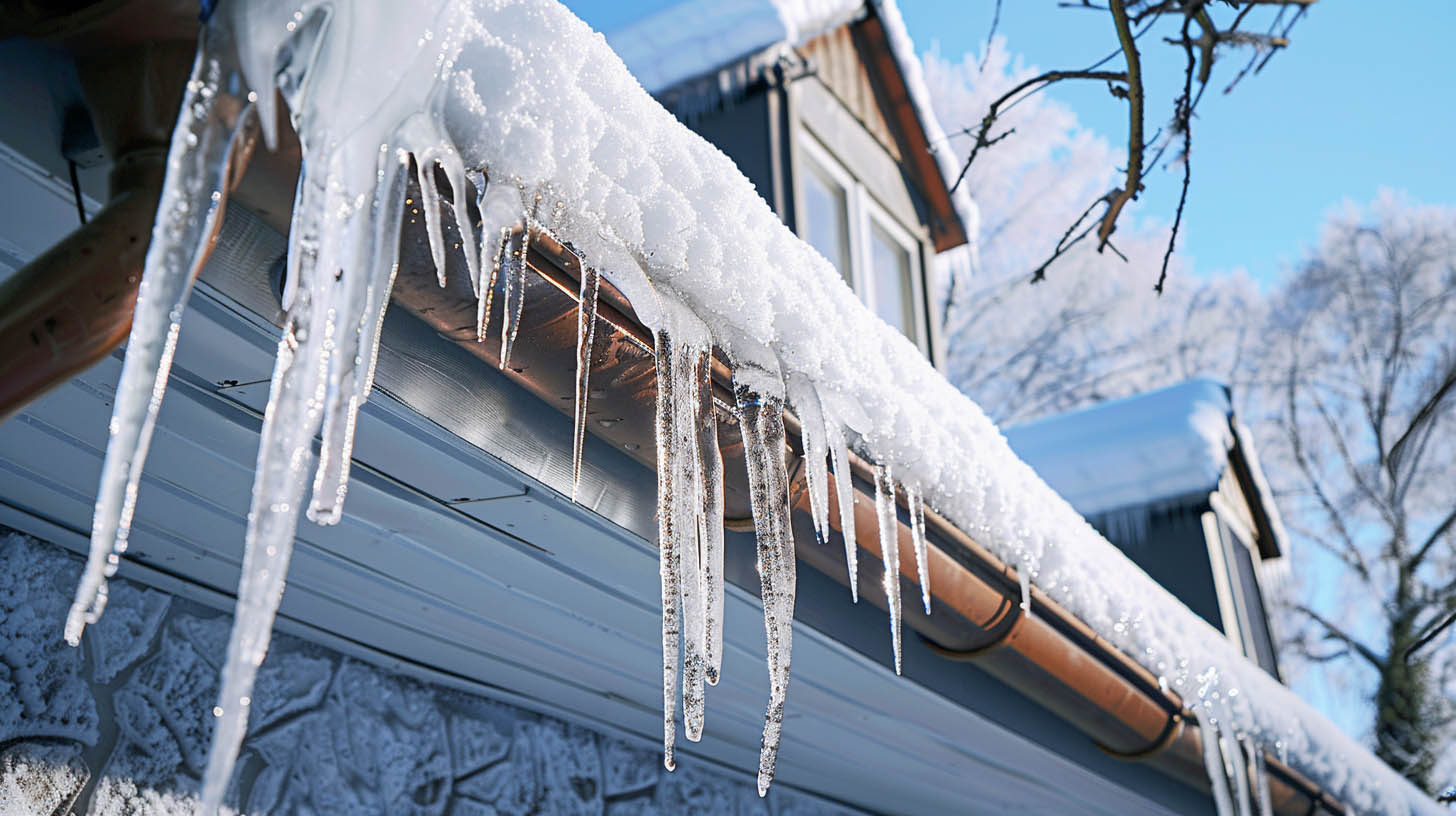Ice dams can pose serious risks to both your roof and personal safety, transforming the charming sight of icicles into a potential hazard. Understanding the best methods for removing ice dams is essential for protecting your home during the winter months. Here, we explore three effective techniques for ice dam removal.
1. Chipping Away Ice
Tool Use: Common household tools like hatchets, crowbars, or ice picks can be used to carefully chip away at the ice starting from the gutters upward.
Precautions and Limitations: While chipping can provide immediate relief by allowing meltwater to drain, it must be done cautiously to avoid damaging the roofing materials. Frequent chipping may be necessary as snowmelt tends to refreeze.
2. Using a Roof Rake
Effective Snow Removal: A roof rake with wheels helps protect your shingles as you remove snow. It’s designed to be used from the ground, eliminating the need to climb onto icy roofs.
Technique Tips: Extend the telescopic handle to reach the roof and pull snow down towards you, avoiding sideways movements that can dislodge shingles.
3. De-Icing with Calcium Chloride
Chemical Melting: Filling a nylon stocking with calcium chloride and placing it across the ice dam can gradually melt the ice, ensuring proper drainage through the gutters.
Advantages: This method is less labor-intensive and reduces the risk of physical damage to the roof compared to mechanical removal methods.
Why Choose Trojan Roofing for Ice Dam Solutions
At Trojan Roofing in Indianapolis, we provide professional advice and services to effectively manage and prevent ice dams. Our expertise ensures your roof is treated safely and efficiently, maintaining its integrity throughout the winter.
Conclusion
Addressing ice dams is crucial for maintaining the safety and durability of your roof. Whether through mechanical means or chemical de-icing, choosing the right method depends on your specific situation and roof condition.
For further information on how to address wet insulation issues in your home, click here.

